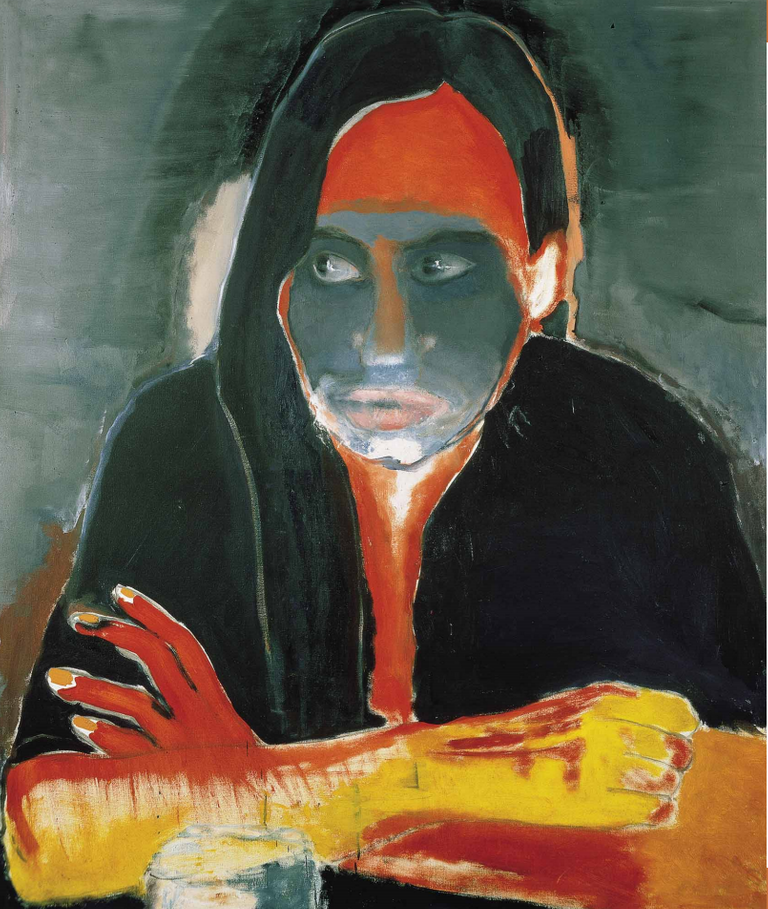Tears of the Sun: A Portrait or is it?
Recently I looked at a wonderful digital art by @hiddenblade ‘s work, titled Tears of the Sun. I am also reading a book lately, (reading is an understatement, immersed will be better word, called Killing Commendatore, by Haruki Murakami), that describes an artist’s struggle with portrait painting. Or is it portrait painting? This led me to write this. In the portrait (I will just call it portrait, although it is digital art) hiddenblade explores a self-discovery. In my mind the portrait is more a feeling or personality than absolutism.
The Story of Wataru Menshiki
Recently I was reading Killing Commendatore, and the tale of Wataru Menshiki. This is not a review of the book, which is widely read, and many good reviews are available. This is mostly my thought when I saw the work Tears of the Sun. Wataru Menshiki is a wealthy IT-Telecom tech guy, who is retired as a relatively young age of 54, after selling his company. He is handsome, likes to drive British Cars, travels overseas (Europe) extensively for work, loves opera, and chamber music. He contacts this painter, who is the protagonist of the story (currently going to a self-discovery, and living in a remote mountain top house) and offers him an obnoxious some of money to paint his portrait. Menshiki is always immaculately dressed, extremely fit, and sports a headful of bright white hair.
When he came for a portrait, he only had one condition. The artist should draw him, whichever way he likes to express Menshiki’s true self. He was most interested into if the artist can bring out something internal, may be a hidden agenda or trait that Menshiki might have, into the portrait. In other words, Menshiki wanted the artist to paint the essence of the subject, as opposed to a photographic representation of the subject itself.

This brings me to Genetic Longing by Marlene Dumas, a well known South African contemporary painter, who likes to paint themes around love, sexuality and shame. Something that both hiddenblade and Murakami explore quite frequently. Dumas also (like the protagonist in Killing Commendatore) prefers to paint from the ‘secondary’ images of the subject to generate ‘primary’ emotion. That gaze in Genetic Longing doesn’t meet the viewer but focused on somewhere else. That skin tone, so bold and colorful, means what exactly? Race? Feelings? Those reds on her folded hands, is it pain, suffering, or is it ecstasy and rage in the yellow. That posture brings out the personality rather than a photograph can ever do.
Back to the Tears
Are those tears of happiness, joy, reaction? Why green? Can’t be sorrow, then it would be blue, can’t be rage, then it would be green. But it is not, its green. This I find intriguing. Makes me wonder about the emotions depicted. The answer to that question is not important, what is important is that it explore certain additional aspect which is difficult for a photograph to achieve. That is what makes a portrait more powerful than a photograph, when done right.
With that said, let me get back to my tales of Wataru Menshiki….
The moment when existence and nonexistence coalesce
Haruki Murakami.... Killing Commendatore

Something has his attention on the right..Are they telling him to put on a mask...😜
Pretty certain that’s a she... but otherwise you could be correct ;)
Can't tell these days without checking under the shorts..:-)
I think it's a very interesting portrait. Unusual and unconventional.
It was great to read your writing, I hope I will get a chance to read such beautiful writing in the future😊
Very nice post, I am South African and don't even know Marlene Dumas, I guess I need to sharpen up my art knowledge!! Interesting looking painting!!
She is amazing in my opinion. If magical realism can be transcribed into painting, and I believe it can be, you get Marlene Dumas.